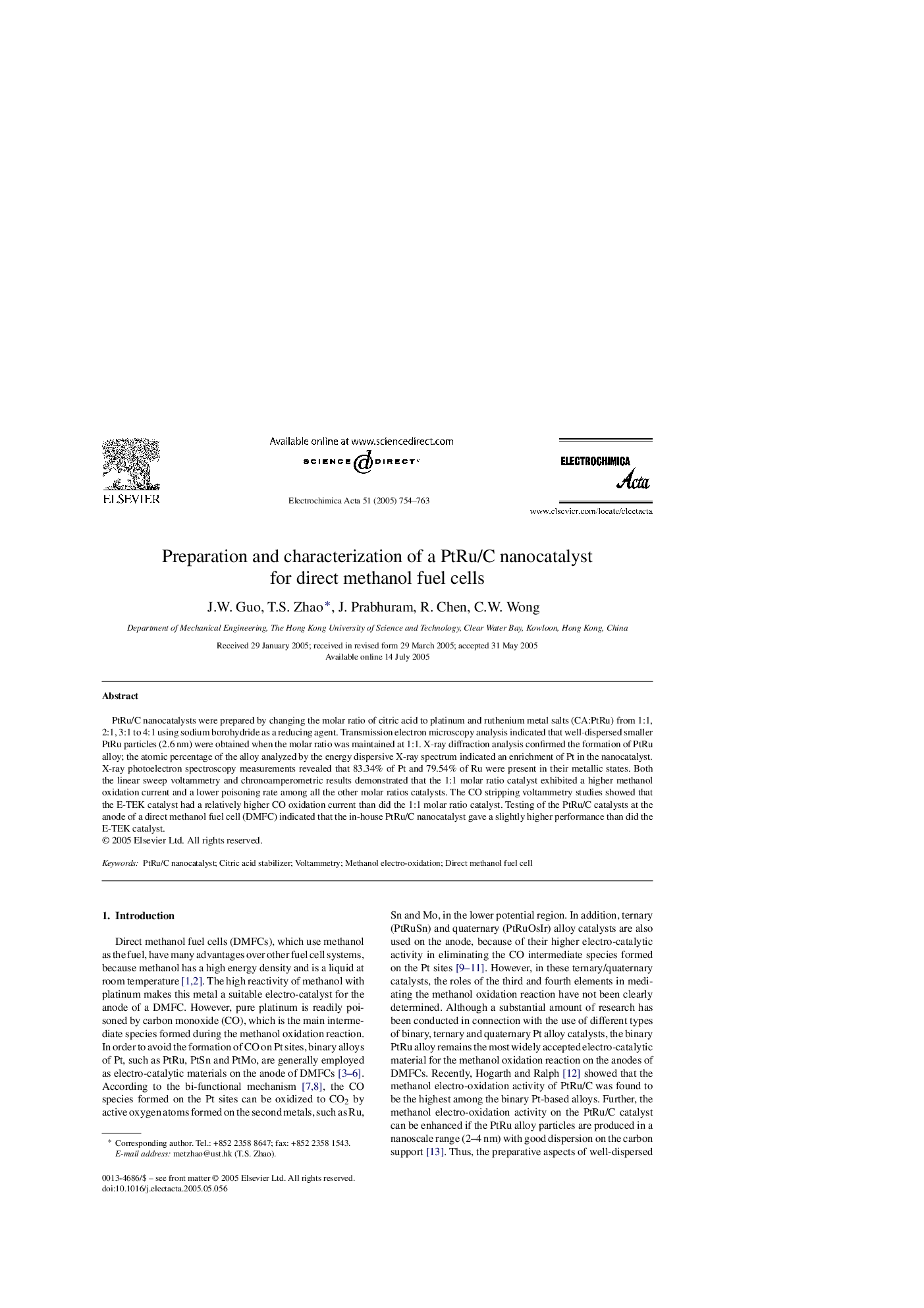| Article ID | Journal | Published Year | Pages | File Type |
|---|---|---|---|---|
| 10269293 | Electrochimica Acta | 2005 | 10 Pages |
Abstract
PtRu/C nanocatalysts were prepared by changing the molar ratio of citric acid to platinum and ruthenium metal salts (CA:PtRu) from 1:1, 2:1, 3:1 to 4:1 using sodium borohydride as a reducing agent. Transmission electron microscopy analysis indicated that well-dispersed smaller PtRu particles (2.6Â nm) were obtained when the molar ratio was maintained at 1:1. X-ray diffraction analysis confirmed the formation of PtRu alloy; the atomic percentage of the alloy analyzed by the energy dispersive X-ray spectrum indicated an enrichment of Pt in the nanocatalyst. X-ray photoelectron spectroscopy measurements revealed that 83.34% of Pt and 79.54% of Ru were present in their metallic states. Both the linear sweep voltammetry and chronoamperometric results demonstrated that the 1:1 molar ratio catalyst exhibited a higher methanol oxidation current and a lower poisoning rate among all the other molar ratios catalysts. The CO stripping voltammetry studies showed that the E-TEK catalyst had a relatively higher CO oxidation current than did the 1:1 molar ratio catalyst. Testing of the PtRu/C catalysts at the anode of a direct methanol fuel cell (DMFC) indicated that the in-house PtRu/C nanocatalyst gave a slightly higher performance than did the E-TEK catalyst.
Related Topics
Physical Sciences and Engineering
Chemical Engineering
Chemical Engineering (General)
Authors
J.W. Guo, T.S. Zhao, J. Prabhuram, R. Chen, C.W. Wong,
